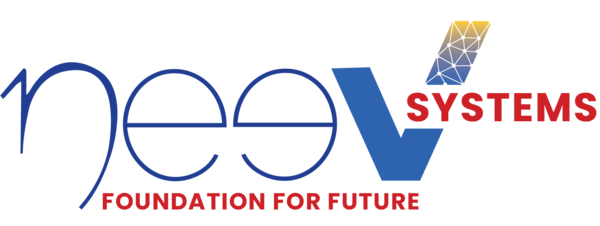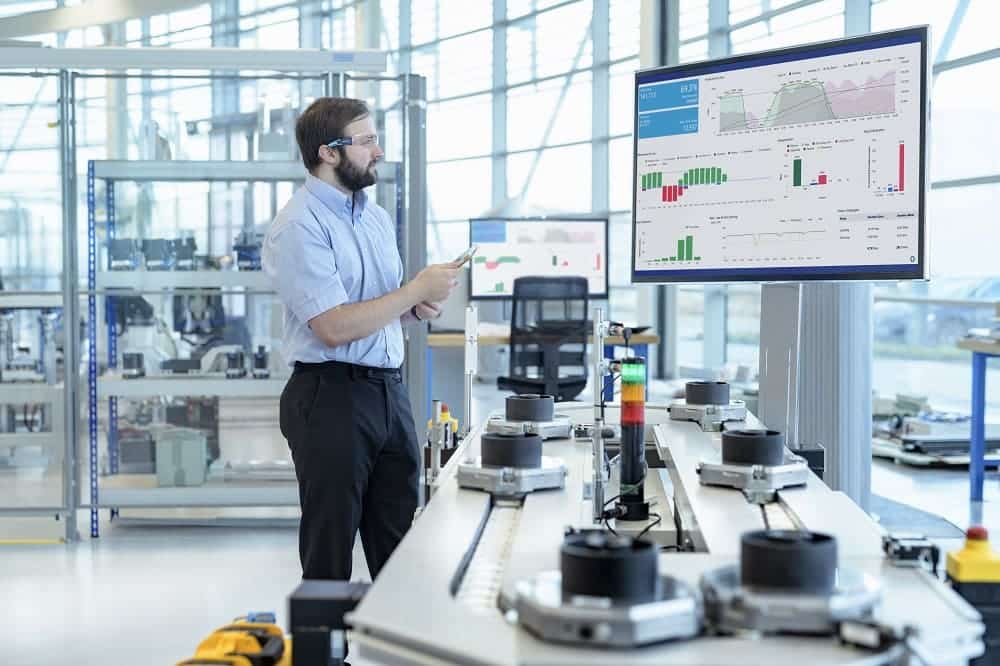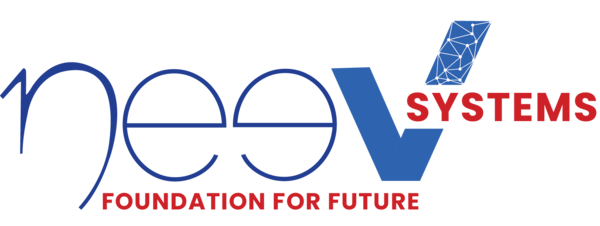Executive Summary
This blog delves into the transformative impact of data analytics on the manufacturing sector. By leveraging IoT and predictive analytics, manufacturers can optimize production, enhance quality control, and streamline supply chain operations, leading to greater efficiency and reduced costs.
Key solutions such as predictive maintenance, real-time quality monitoring, and energy management analytics are essential for driving operational excellence. Manufacturers can unlock long-term success by implementing these strategies and partnering with an experienced provider like Neev Systems.
Key Takeaways
- Data analytics is crucial for optimizing manufacturing processes and improving operational efficiency.
- Predictive maintenance minimizes downtime and extends equipment lifespan.
- Real-time quality monitoring enhances product consistency and reduces waste.
- Energy management analytics helps lower costs and improve sustainability.
- Partnering with a trusted provider simplifies implementation and ensures faster ROI.
Introduction
Data is a valued resource in the manufacturing industry, where precision and efficiency are key. The ability to harness and analyze this data can make the difference between staying ahead of the competition and falling behind.
A recent study. by UBS projects the data universe to grow over tenfold by 2030.
Considering most of the data produced today is unstructured and low in quality, this is bad news, especially in the manufacturing industry, where good-quality data is imperative to making informed decisions.
However, the advent of Industry 4.0 has transformed traditional manufacturing operations, turning data from a passive byproduct into an active asset. With IoT and predictive analytics integration, manufacturers can unlock real-time insights that drive smarter decisions, enhance operational efficiency, and foster innovation.
But how can manufacturers effectively implement these technologies to achieve tangible results?
Let’s explore the answer through this blog!
We’ll dive into how data analytics and IoT can revolutionize manufacturing processes, offering actionable strategies and insights to help manufacturers stay competitive and responsive in an ever-evolving industry.
The Importance of Data in Manufacturing
Gartner reports that 80% of digital businesses seeking to scale will fail due to the lack of a modern, adaptive approach to data governance. This underscores the potential impact of data analytics and optimization on business productivity and decision-making.
The manufacturing sector has always been data-rich, but historically, much of this data remained untapped or underutilized. Today, with advancements in sensors, Internet of Things (IoT) devices, and data collection technologies, manufacturers have access to an unprecedented volume of real-time data from every aspect of their operations.
Key areas where data is transforming manufacturing:
- Process Optimization: Real-time data from production lines enables continuous improvement and optimization of manufacturing processes.
- Quality Control: Advanced analytics can predict and prevent quality issues before they occur, reducing waste and improving product consistency.
- Supply Chain Management: Data-driven insights help forecast demand, optimize inventory, and manage supplier performance.
- Predictive Maintenance: By analyzing equipment data, manufacturers can predict when maintenance is needed, reducing downtime and extending asset life.
- Energy Management: Data analytics helps identify energy inefficiencies and optimize consumption patterns.
- Customer Insights: Analyzing market and customer data leads to better product development and personalization strategies.
Types of Analytics for Manufacturing
To leverage data effectively, manufacturers need to understand and implement various types of analytics. Each type offers unique insights and benefits:
| Descriptive Analytics | Application in Manufacturing:
|
| Descriptive analytics focuses on understanding what has happened in the past. It involves aggregating historical data to gain insights into trends and patterns. |
For example, a car manufacturer can use descriptive analytics to track monthly production volumes across different models and plants, helping to identify seasonal trends and production bottlenecks. |
| Diagnostic Analytics Diagnostic analytics digs deeper into data to understand why certain events or trends occurred. | Application in Manufacturing:
For instance, an electronics manufacturer could use diagnostic analytics,. to determine the cause of increased defect rates in a particular product line, tracing the problem back to a specific component supplier. |
| Predictive Analytics Predictive analytics uses historical data and machine learning algorithms to forecast future events or outcomes. It is the most important type of analytics used in manufacturing. | Application in Manufacturing:
Let’s take a food processing company as an example. It can use predictive analytics to forecast demand for different product lines, optimize production schedules, and reduce waste. |
| Prescriptive Analytics Prescriptive analytics goes further by predicting what will happen and suggesting actions to take advantage of the predictions. | Application in Manufacturing:
For instance, an aerospace parts manufacturer uses prescriptive analytics to optimize its production schedule, considering factors like demand forecasts, machine availability, and supply chain constraints. |
Benefits for Manufacturing
The combination of IoT and predictive analytics offers numerous benefits for manufacturers:
- Improved Equipment Reliability: Predictive maintenance reduces unplanned downtime and extends asset life.
- Enhanced Quality Control: Real-time monitoring and predictive quality analytics reduce defects and improve product consistency.
- Optimized Production Planning: Accurate demand forecasting and production optimization lead to better resource allocation.
- Increased Energy Efficiency:Energy consumption patterns can be analyzed and optimized, reducing costs and improving sustainability.
- Streamlined Supply Chain: Better demand forecasting and inventory management lead to a more efficient supply chain.
- Improved Safety: Predictive analytics can identify potential safety hazards before they lead to accidents.
- Faster Innovation: Data-driven insights can inform product development and process improvement initiatives.
Implementation Process
Implementing data analytics in manufacturing requires a strategic approach. Here’s a step-by-step guide to help manufacturers embark on their data analytics journey:

Unlock the Power of Data in Manufacturing
Challenges and Solutions
While the benefits of IoT and predictive analytics are clear, implementation can come with challenges. Here are some common obstacles and how to overcome them:
Case Studies
Let’s explore some real-world examples of how manufacturers have successfully implemented data analytics to drive operational improvements:
Case Study 1: Optimizing Supply Chain and Order Management in a Manufacturing Company
A global manufacturing leader faced challenges in extracting real-time insights from their Oracle ERP system due to data silos and infrastructure limitations. Neev Systems implemented a comprehensive solution to address these issues, which includes:
- Automated data extraction, transformation, and loading (ETL) from Oracle ERP to Snowflake using HevoData.
- Established a scalable cloud-based data warehouse with Snowflake for storing and modeling data.
- Integrated Tableau for real-time reporting and dynamic business insights.
The solution resulted in:
- A 360-degree overview of order fulfillment, inventory, and procurement processes.
- Real-time visibility of on-hand and backlog inventory, enabling better decision-making.
- Seamless scalability to support the company’s growing global operations.
Key takeaway: This approach transformed the company’s data landscape, enabling it to optimize supply chain and order management while ensuring operational efficiency and scalability.
Case Study 2: Streamlining Manufacturing and Order Management with Oracle Fusion Cloud and IoT Integration at Alcar Ruote
Alcar Ruote, a Swiss manufacturer of steel wheels for the automotive aftermarket, faced challenges with its on-premises systems, which couldn’t deliver the real-time data needed for efficient order management and customer service. To overcome these issues, the company implemented Oracle Fusion Cloud applications. They:
- Deployed Oracle Fusion Cloud SCM and ERP to manage manufacturing, planning, order management, procurement, and financial processes.
- Automated 80% of sales orders through Oracle Fusion Cloud Order Management, accelerating order-to-fill processes and improving customer service.
- Integrated IoT technology to analyze sensor data, predict equipment failures, and reduce downtime.
The solution resulted in:
- Enhanced production efficiency with real-time data insights.
- Accelerated order processing and improved customer service with automation.
- Reduced equipment downtime through predictive maintenance powered by IoT technology.
Key takeaway: This innovative approach allowed Alcar Ruote to uphold its commitment to Swiss-quality manufacturing while improving operational efficiency and delivery timelines.
Case Study 3: Transforming IoT Insights for View Inc.
View Inc, a leading IoT device manufacturer, faced challenges integrating diverse data sources and providing real-time analytics for customer support. Neev Systems implemented a comprehensive solution to address these issues:
- Developed a robust data processing and analytics system integrating multiple IoT data sources
- Implemented real-time data transformation and analytics using Azure Data Factory and Snowflake
- Created an integrated data mart for a 360-degree view of IoT devices
- Established a metadata-driven approach for seamless scalability
- Deployed advanced alerting mechanisms and automated service ticket generation
The solution resulted in:
- Enhanced customer support with comprehensive device insights
- Proactive maintenance through real-time analytics and automated alerting
- Improved operational efficiency and scalability
This innovative approach transformed View Inc.’s data landscape, enabling them to leverage IoT insights effectively. The project’s success underscored the power of integrating disparate systems into a cohesive, user-friendly analytics platform, setting a new standard for IoT data management in the industry.
Key takeaway: Advanced analytics can significantly improve supply chain efficiency, reducing costs while improving customer satisfaction.
Neev Systems’ Data and Analytics Services
At Neev Systems, we provide tailored data analytics solutions for manufacturers to enhance decision-making and achieve operational excellence. Recognizing that every manufacturing operation is unique, our approach includes customized solutions, guiding you from initial assessment through full-scale deployment. We leverage data analytics, machine learning, and AI advancements to deliver impactful insights.
Our solutions are scalable, designed to accommodate growing data volumes, and feature user-friendly interfaces, ensuring all stakeholders can access valuable insights. Key offerings include:
- Predictive Maintenance Solutions: Minimize downtime and reduce maintenance costs.
- Quality Analytics: Improve product quality through real-time monitoring and predictive tools.
- Supply Chain Optimization: Enhance efficiency with demand forecasting and inventory management.
- Energy Management Analytics: Lower energy costs and improve sustainability through consumption analytics.
- Production Optimization: Boost equipment effectiveness and production efficiency.
With proven expertise and rapid time-to-value, our solutions deliver measurable results within 3-6 months. We also provide ongoing support to ensure continuous improvement and long-term success. Our industry partnerships with leading technology providers guarantee access to the best tools and platforms while robust data security protects your information.
Choose Neev Systems for a comprehensive, scalable, and secure approach to manufacturing analytics.
Partner with Neev Systems to streamline your manufacturing process and catapult your business to new heights.

Drive Smarter Decisions with Advanced Analytics

Amar Chand Dasari
With 15 years of experience in Data Analytics and Business Intelligence, Amar excels in designing scalable solutions for industries like Manufacturing, Finance, and Telecom. His expertise includes hybrid BI architectures with AWS, Azure, and Snowflake. Amar is passionate about delivering end-to-end solutions that turn data into actionable insights.


